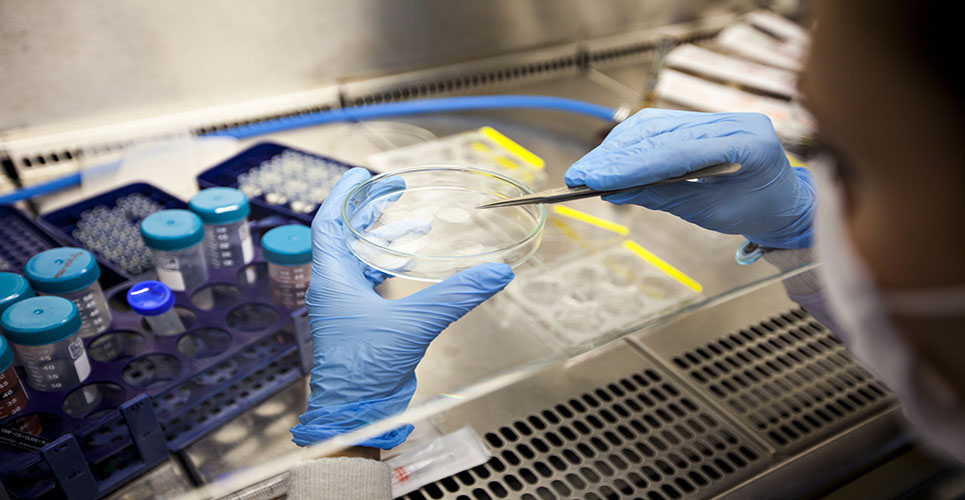Janssen’s SYLVANT® (siltuximab) has been approved by the European Commission (EC) for the treatment of adult patients with multicentric Castleman’s disease (MCD) who are human immunodeficiency virus (HIV) negative and human herpes virus-8 (HHV-8) negative.(1)
Janssen’s SYLVANT® (siltuximab) has been approved by the European Commission (EC) for the treatment of adult patients with multicentric Castleman’s disease (MCD) who are human immunodeficiency virus (HIV) negative and human herpes virus-8 (HHV-8) negative.(1)
SYLVANT is a monoclonal antibody (a specialised type of protein) that binds selectively to interleukin-6 (IL-6). It is administered as an intravenous (IV) infusion once every 3 weeks(2) and is the first medicine to receive regulatory approval in the EU for the treatment of MCD patients.
MCD is a rare blood disorder with high morbidity in which lymphocytes, a type of white blood cell, are overproduced, leading to enlarged lymph nodes. MCD can also affect lymphoid tissue of internal organs, causing the liver, spleen or other organs to enlarge.(3)
Infections, multisystem organ failure and malignancies including malignant lymphoma are common causes of death in patients with MCD.(3,4) It is classified as a rare disease by the EC, meaning that it affects fewer than five in 10,000 people.(5) In fact, MCD is so rare that it is difficult to track the number of cases across Europe. As the majority of publications on MCD are based on case reports, epidemiological evidence is scarce. However, a recent study from the US estimated the 10-year prevalence of MCD to be 2.4 cases per million inhabitants.(6)
“The approval of SYLVANT means that there is now an EU approved treatment for patients with MCD who are HIV negative and HHV-8 negative. SYLVANT will provide an urgently needed treatment option that will make a significant difference to the way that MCD is managed,” said Professor Pier Luigi Zinzani, Associate Professor of Hematology, University of Bologna, Italy. “It has the potential to become a new standard of care for patients, providing an important new therapeutic option to those suffering with this chronic, serious and debilitating disease.”
While the cause of MCD is unknown, overproduction of IL-6 is considered a key mechanism in MCD.(3,7) SYLVANT works by binding to human IL-6, a multifunctional cytokine produced by various cells such as T cells, B cells, monocytes, fibroblasts and endothelial cells.(2,7)
Jane Griffiths, Company Group Chairman of Janssen Europe, the Middle East and Africa (EMEA) said, “Janssen is committed to developing compounds in areas of unmet medical need and our expertise in haematologic malignancies was key to recognising the potential of SYLVANT. As the first company with an approved medicine to treat MCD in Europe, we are very proud to be able to offer an effective treatment option for eligible patients with this rare and challenging disease and further demonstrate our commitment to patients.”
The EC approval was based on the results of the MCD 2001 Pivotal Study and follows the accelerated assessment and recommendation from the Committee for Medicinal Products for Human Use (CHMP) to approve SYLVANT. The US Food and Drug Administration’s approval of SYLVANT™ was announced on 23 April 2014. SYLVANT has been granted orphan drug status for MCD in both the EU and the US.
References
- European Commission. Community register of medicinal products for human use: SYLVANT authorisation. Available at: http://ec.europa.eu/health/documents/community-register/html/h928.htm (accessed 3 June 2014).
- SYLVANT® (siltuximab) Summary of Product Characteristics. 2014.
- American Cancer Society. Castleman disease. Available at: http://www.cancer.org/acs/groups/cid/documents/webcontent/003093-pdf.pdf (accessed 28 February 2014).
- Van Rhee F, et al. Castleman Disease in the 21st century: an update on diagnosis, assessment, and therapy. Clin Adv Hematol Oncol 2010;8:486–98.
- European Commission. Rare Diseases. Available at: http://ec.europa.eu/health/rare_diseases/policy/index_en.htm (accessed 30 April 2014).
- Robinson D, et al. Clinical epidemiology and treatment patterns of patients with multicentric Castleman’s disease: results from two US treatment centres. Br J Haematol 2014;165:39–48.
- El-Osta HE, Kurzrock R. Castleman’s disease: from basic mechanisms to molecular therapeutics. Oncologist 2011;16:497–511.

